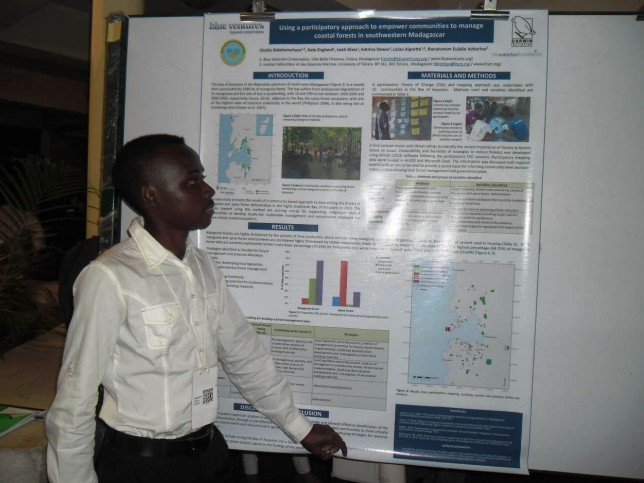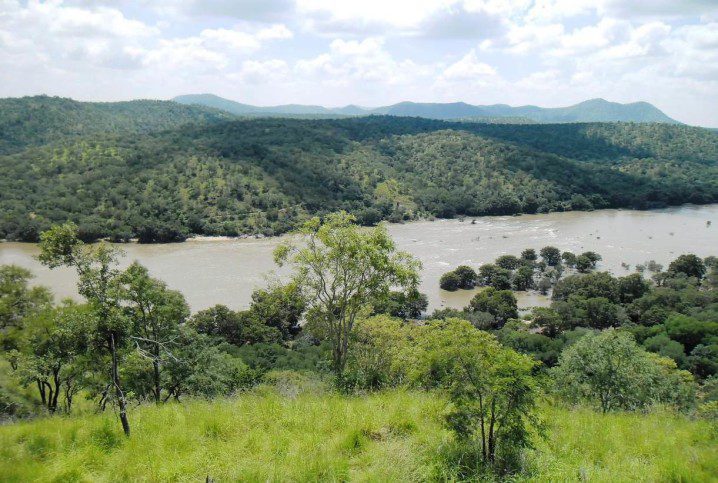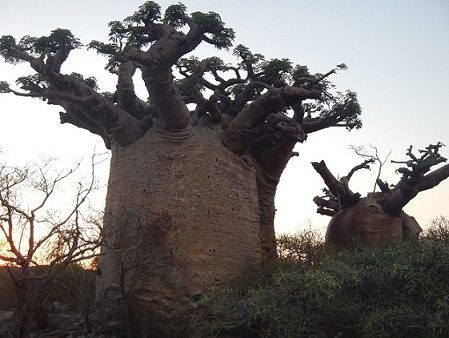by Cicelin RAKOTOMAHAZO, Socioeconomic Scientist – Blue Forests, Madagascar
This was not only my first time on a flight but also my first time travelling outside of Madagascar. I was heading to Bangalore, the third largest city in India, to attend the four day Student Conference on Conservation Science (SCCS).
The SCCS was founded in 2010 with the aim of bringing together young researchers to exchange knowledge on science and the practice of biodiversity conservation. It facilitates interaction, encourages exchange of research ideas and methods, sharing of knowledge and experience related to conserving wildlife and environments, and helps to build the networks and capacity of its participants.

All the participants at the Bangalore SCCS!
During the four days of conference I was representing Madagascar, Blue Ventures, and the Institut Halieutique des Sciences Marines (IHSM) at the University of Toliara, Madagascar in front of the delegates from various universities, institutions and NGO’s from across the world (no pressure!). The talks and poster presentations comprised of areas of research that I have never experienced before – many of these were focused on animals. They ranged from the tiny (ants, butterflies, frogs) to some of the biggest creatures on our planet (tigers and elephants). The question ‘why do we try to conserve?’ was raised, and the responses were then presented in a series of demonstrations across different scientific disciplines (biology, phylogeny and social sciences).
Something interesting I learned, is that in India, tigers are symbols of the wilderness and health of an ecosystem. They also occupy an important place in Indian culture; historically, they symbolise magnificence, power, beauty and fierceness and are associated with bravery and valour.

Cicelin presenting his poster at the conference
During the conference I presented my poster, “Using a Participatory approach to empower the community-led mangrove conservation in south-western Madagascar” and was pleased to see lots of people in attendance – people who were interested in learning about my research. My presentation group was joined by Dr Asmita Cabra who completed her PhD on the impact of conservation-induced displacement on the livelihoods of, marginalised Adivasi communities at Jawaharlal Nehru University. Based on the questions from the visitors and the constructive comments I received from Dr Cabra, I was happy to note that our research is of interest to the wider conservation community, especially in terms of working towards community-led, sustainable management of natural resources.

The beautiful landscape surrounding the Kaveri River
The day after the end of the conference, we embarked on what was nearly a two-hour trip from Bangalore to visit Bheemeshwari Nature, an exciting wildlife sanctuary about 100 km southwest of the city. We spent most of the day there, with the morning occupied by a nature walk to see the different landscapes of the reserve. During our trekking, we were lucky enough to see some bonnet macaques (Macaca vadiata) playing and eating fruits in the middle of the forest.
After having lunch at a wonderful restaurant in the midst of that incredibly dense Jungle, we went on a really fun water rafting expedition. We spent about half an hour riding in a round, rubber boat along the rocky and rough river, using our binoculars to see the crocodiles basking in the sun on the river bank.

Rafting on the Kaveri River: my friend Biswajit (in the middle of three girls) enjoyed the ride in the round boat
Overall, my visit to Bangalore was incredibly exciting and fruitful. After only one week spent there, I wanted to explore and travel all around India, largely thanks to my room mates who shared all their knowledge on their country! I was also really thankful to have had the opportunity to meet and mix with students from all around the world, who shared their valuable experiences, methods and approaches towards the conservation of natural resources. This trip, on top of allowing me to share information about Madagascar and my experiences in terms of conservation, also gave me the opportunity to create a new network with the students from all the various countries that took part – something that is valuable for sharing knowledge and experiences in the future as we all work towards the same goals.
One thing that I noticed from this conference was that people are proud of their nations’ biodiversity. By being from, and talking about Madagascar, the people I met during the conference were excited and animated to talk about my country, referring directly to Madagascar as a ‘hotspot’ for biodiversity. They all expressed a keen interest in exploring and learning more about Madagascar’s primates (lemurs) and famous baobabs.. My country is incredible and so many things can still be learned from our ‘red’ island, so in addition to the information that I shared about our experience of mangrove conservation, I urge all Malagasy people to work to take part in promoting, and being proud of, Madagascar’s famous biodiversity.

We need to be proud of our natural heritage
I would like to thank the organisers of the conference including the Centre for Ecological Sciences, Indian Institute of Science, the National Centre for Biological Sciences, the Madras Crocodile Bank Trust, the Foundation for Ecological Security and the Asian Nature Conservation Foundation for providing with financial assistance. I would also like to thank my colleagues, the communities at my research location in the Bay of Assassins and the Darwin (DEFRA) Foundation for supporting the research which I presented at this symposium.

